Effects of Nanosecond-Pulsed Laser Milling on the Surface Properties of Al2O3 Ceramics
Abstract
1. Introduction
2. Materials and Methods
2.1. Materials
2.2. Laser Milling
2.3. Surface Morphology
2.4. XRD Experiment
3. Results and Discussion
3.1. The Effect of Laser Power on Surface Roughness and Milling Depth
3.2. The Effect of the Laser Repetition Rate on Surface Roughness and Milling Depth
3.3. The Influence of the Number of Milling Processes on Surface Roughness and Milling Depth
3.4. The Mechanism of Nanosecond-Pulsed Laser Milling
4. Conclusions
- (1)
- The laser-induced temperature on the ceramic’s surface rose and the surface roughness increased with increases in laser power, pulse repetition rate, and number of milling operations. This was due to morphological peculiarities of the ceramic surface, associated with cavities, melt, and granular structure;
- (2)
- The increases in laser power, pulse repetition rate, and number of milling processes led to enhancement of the laser-induced gasification on the Al2O3 ceramic surface, which increased the volume of departed material and the milling depth;
- (3)
- After nanosecond-pulsed laser milling, the surface morphology of the Al2O3 ceramic exhibited cavities and melt caused by the material melting and the formation of the granular solidified structure as a result of gasification. Accordingly, we propose that melting and gasification were acting synchronously during the laser milling, thereby laying the foundation for the main mechanism of nanosecond-pulsed laser milling in the removal of the materials.
Author Contributions
Funding
Institutional Review Board Statement
Informed Consent Statement
Data Availability Statement
Acknowledgments
Conflicts of Interest
References
- Hu, M. Current status of advanced ceramics and its development trend. China Powder Ind. 2018, 5, 15–17. [Google Scholar]
- Hacker, J.; Motz, G.; Ziegler, G. Ceramic Materials and Components for Engines; World Scientific: Singapore, 2001. [Google Scholar]
- Popov, A.I.; Lushchik, A.; Shablonin, E.; Vasil’chenko, E.; Kotomin, E.A.; Moskina, A.M.; Kuzovkov, V.N. Comparison of the F-type center thermal annealing in heavy-ion and neutron irradiated Al2O3 single crystals. Nucl. Instrum. Methods Phys. Res. Sect. B 2018, 433, 93–97. [Google Scholar] [CrossRef]
- Samant, A.N.; Dahotre, N.B. Laser machining of structural ceramics—A review. J. Eur. Ceram. Soc. 2009, 29, 969–993. [Google Scholar] [CrossRef]
- Genna, S.; Leone, C.; Lopresto, V. An experimental study on the surface mechanisms formation during the laser milling of PMMA. Polym. Compos. 2015, 36, 1063–1071. [Google Scholar] [CrossRef]
- Preusch, F.; Adelmann, B.; Hellmann, R. Micromachining of AlN and Al2O3 using fiber laser. Micromachines 2014, 5, 1051–1060. [Google Scholar] [CrossRef]
- Jian, L.; Lingfei, J.; Yan, H. Experimental Study on Milling of Y-TZP Ceramic by 532 nm Laser. Chin. J. Lasers 2015, 42, 0806002. [Google Scholar] [CrossRef]
- Yinbo, Z. Numerical simulation and experimental investigation on laser milling of Al2O3 ceramic. China Mech. Eng. Soc. 2010, 3, 5502. [Google Scholar]
- Luo, Y.; Wang, X. Morphology investigation of removal particles during laser cutting of Al2 O3, ceramics based on vapor-to-melt ratio. J. Mater. Process. Technol. 2018, 255, 340–346. [Google Scholar] [CrossRef]
- Muneer, K.M.; Usama, U.; Abdulrahman, A. Optimization of laser micro milling of alumina ceramic using radial basis functions and MOGA-II. Int. J. Adv. Manuf. Technol. 2017, 91, 2017–2029. [Google Scholar]
- Parry, J.P.; Shephard, J.D.; Hand, D.P.; Moorhouse, C.; Jones, N.; Weston, N. Laser Micromachining of Zirconia (Y-TZP) Ceramics in the Picosecond Regime and the Impact on Material Strength. Int. J. Appl. Ceram. Technol. 2011, 8, 163–171. [Google Scholar] [CrossRef]
- Yilbas, B.S.; Ali, H.; Khaled, M. Laser gas assisted texturing of alumina surfaces and effects of environmental dry mud solution on surface characteristics. Ceram. Int. 2016, 42, 396–404. [Google Scholar] [CrossRef]
- Kibria, G.; Doloi, B.; Bhattacharyya, B. Investigation into the effect of overlap factors and process parameters on surface roughness and machined depth during micro-turning process with Nd: YAG laser. Opt. Laser Technol. 2014, 60, 90–98. [Google Scholar] [CrossRef]
- Watkins, K.G.; Curran, C.; Lee, J. Two new mechanisms for laser cleaning using Nd: YAG sources. J. Cult. Herit. 2003, 4, 59–64. [Google Scholar] [CrossRef]
- Lippert, T.; Hauer, M.; Phipps, C.R. Fundamentals and applications of polymers designed for laser ablation. Appl. Phys. A: Mater. Sci. Process. 2003, 77, 259–264. [Google Scholar] [CrossRef]
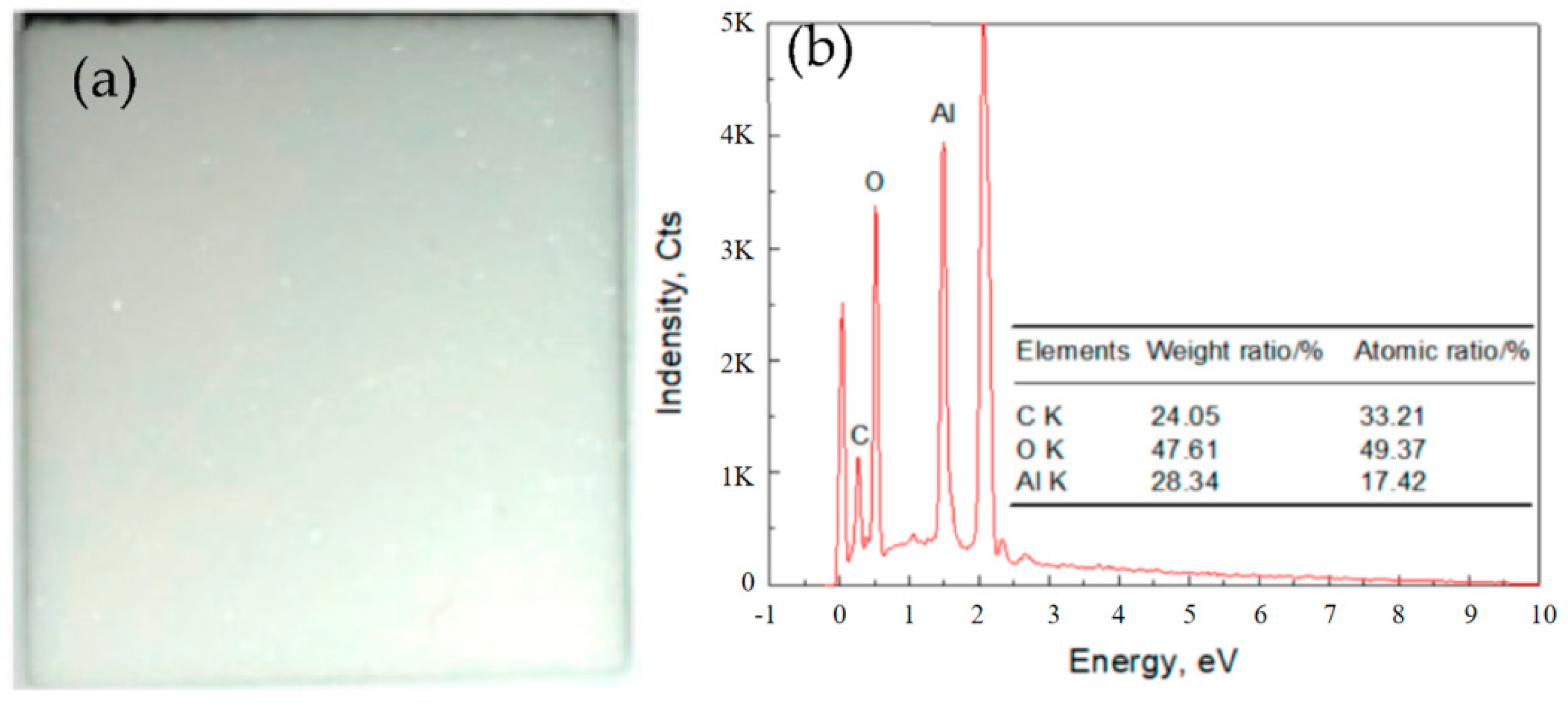
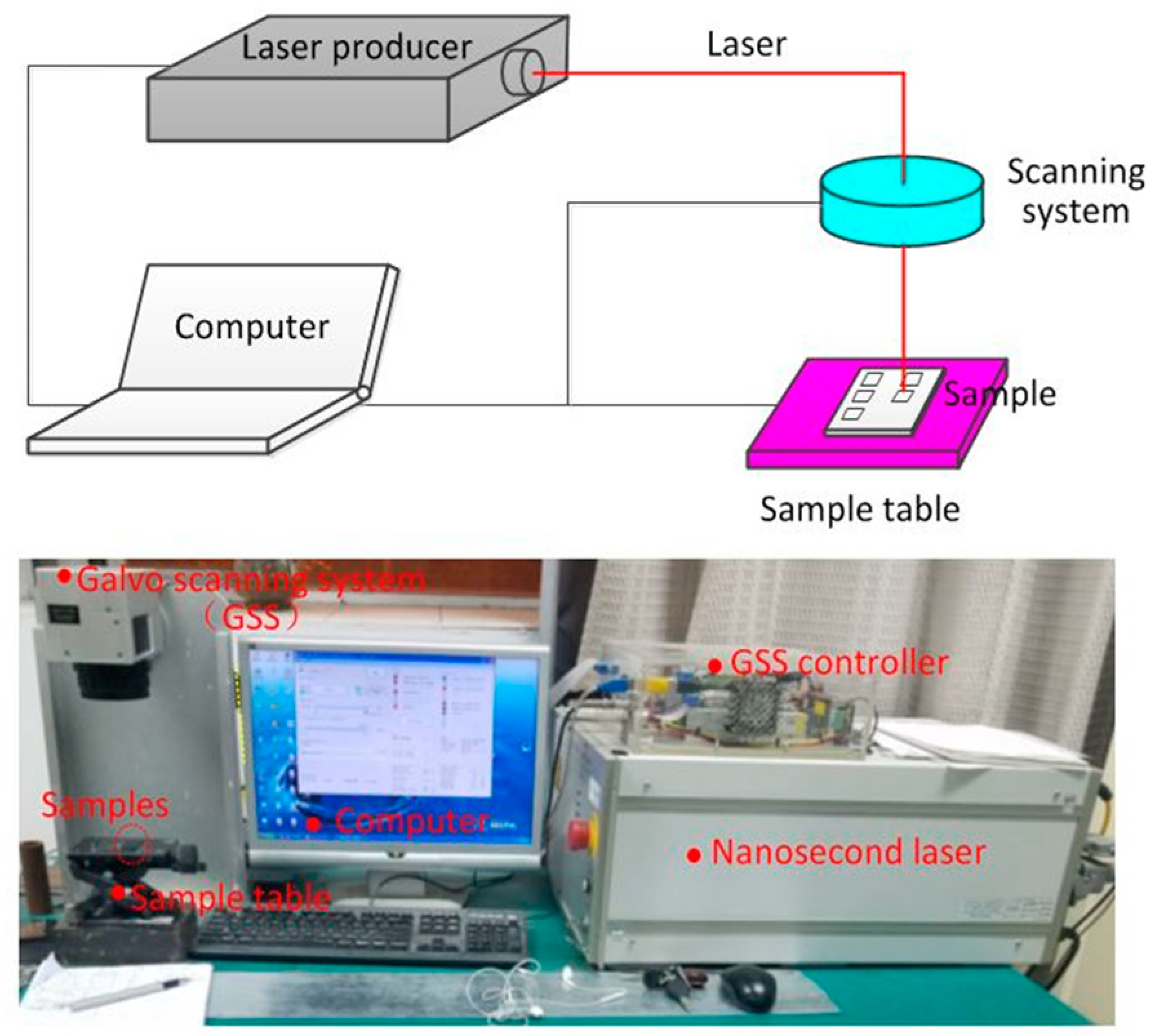
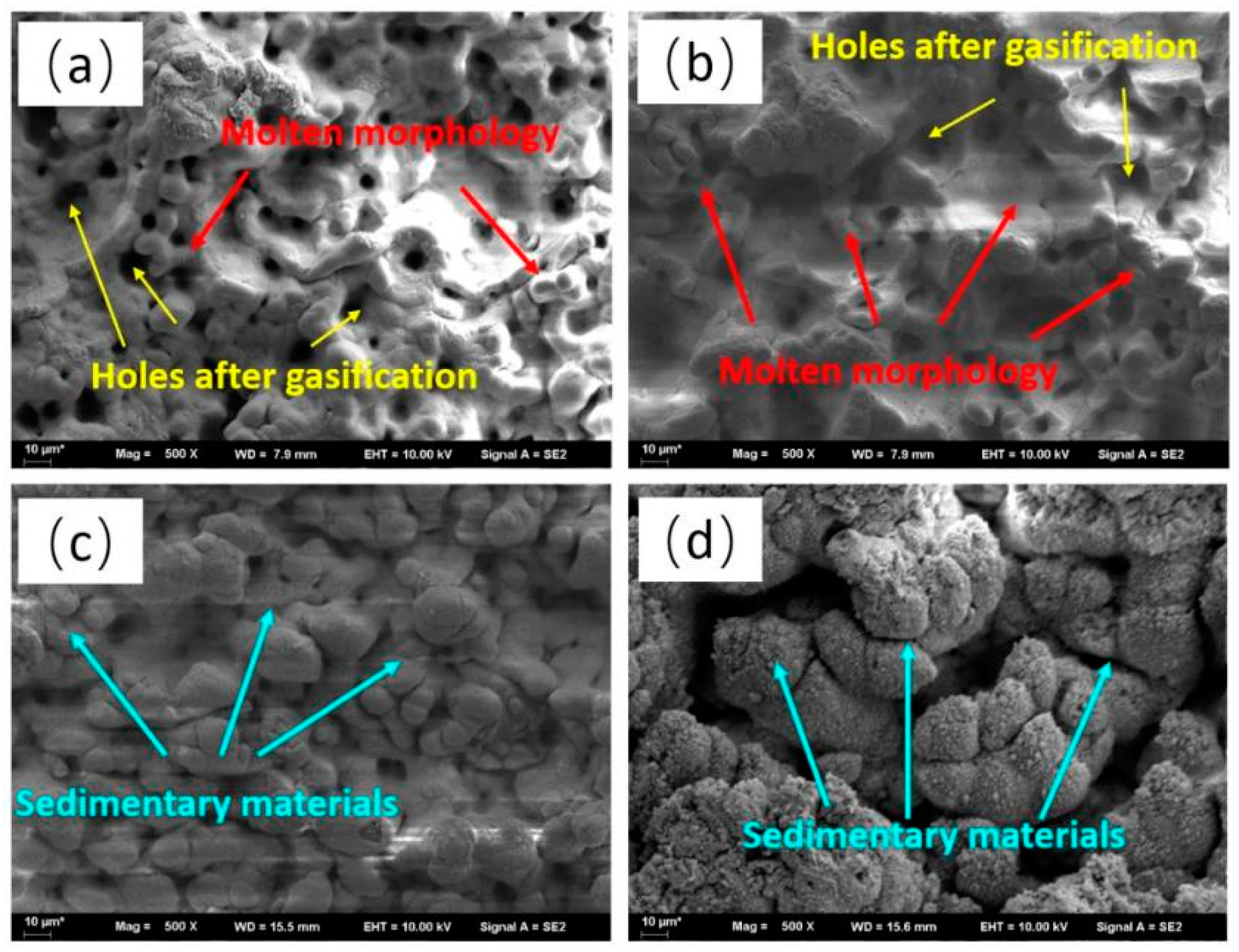
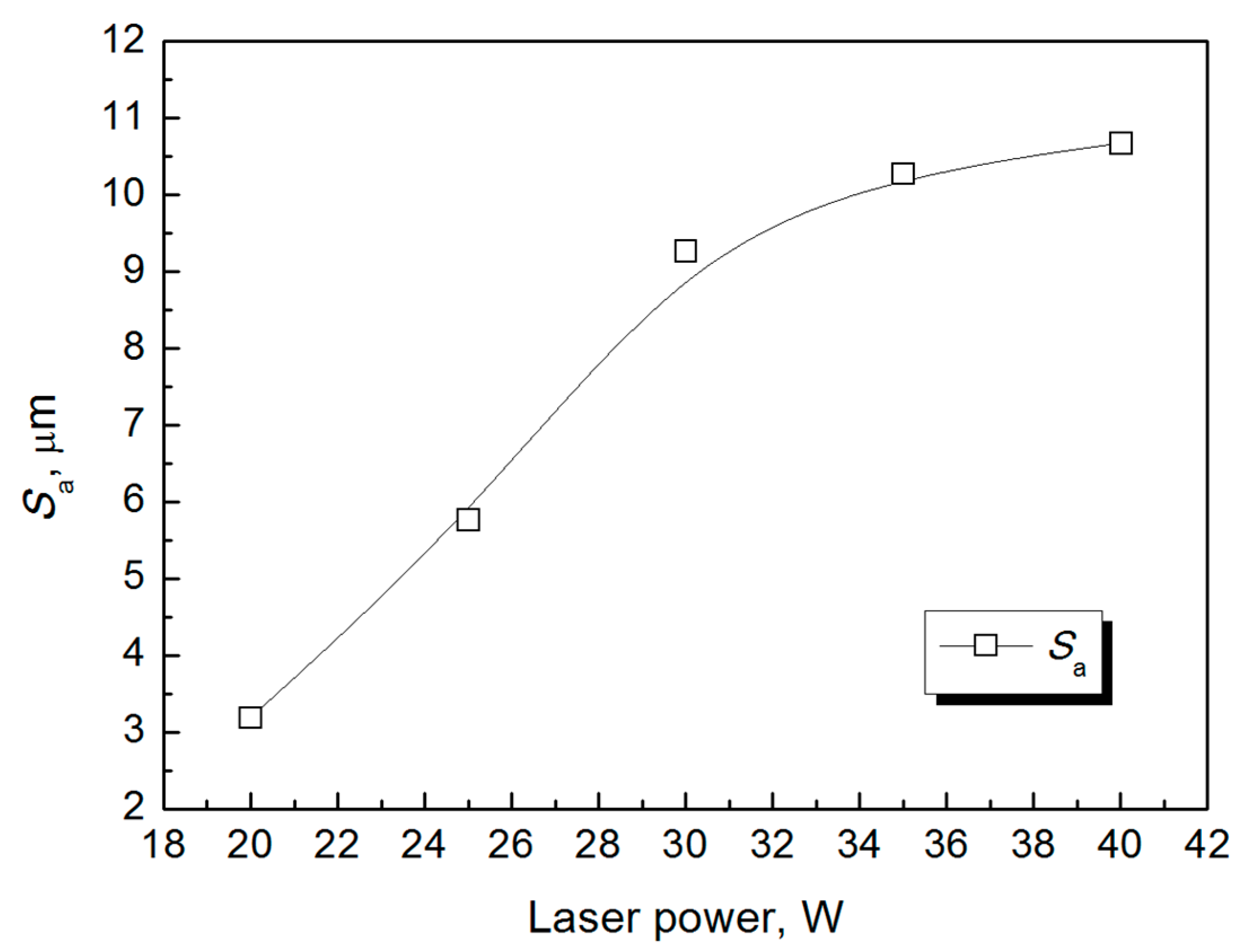
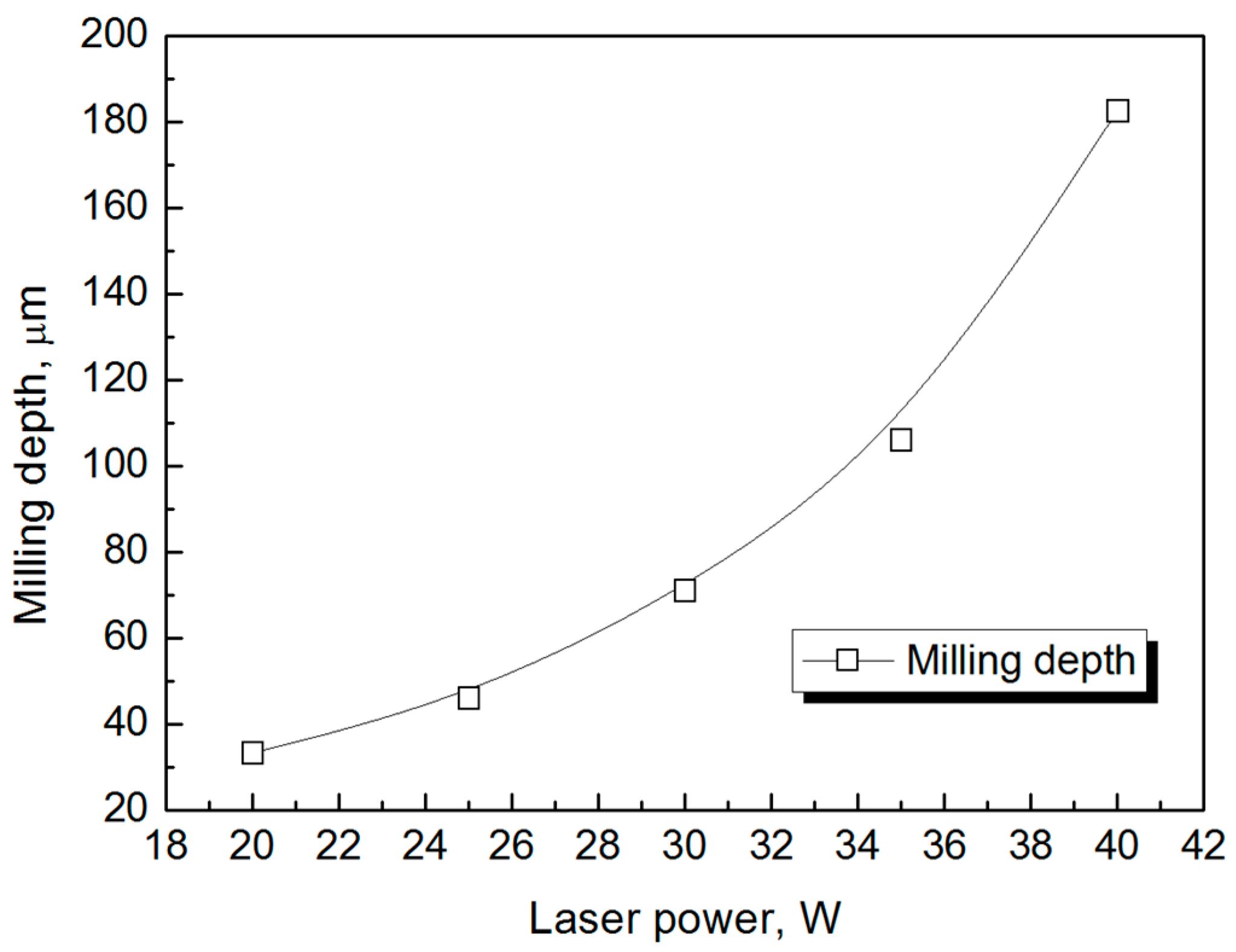
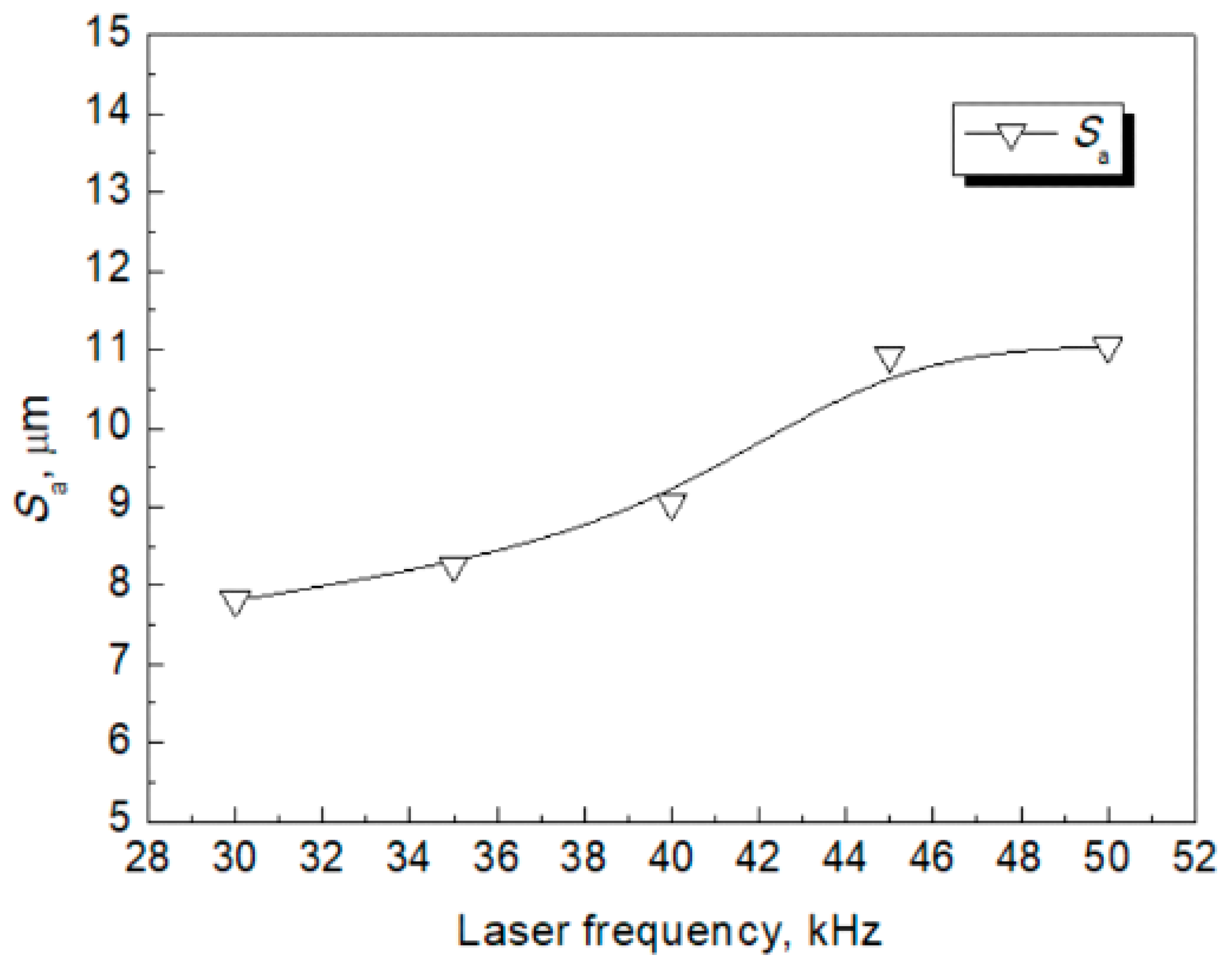
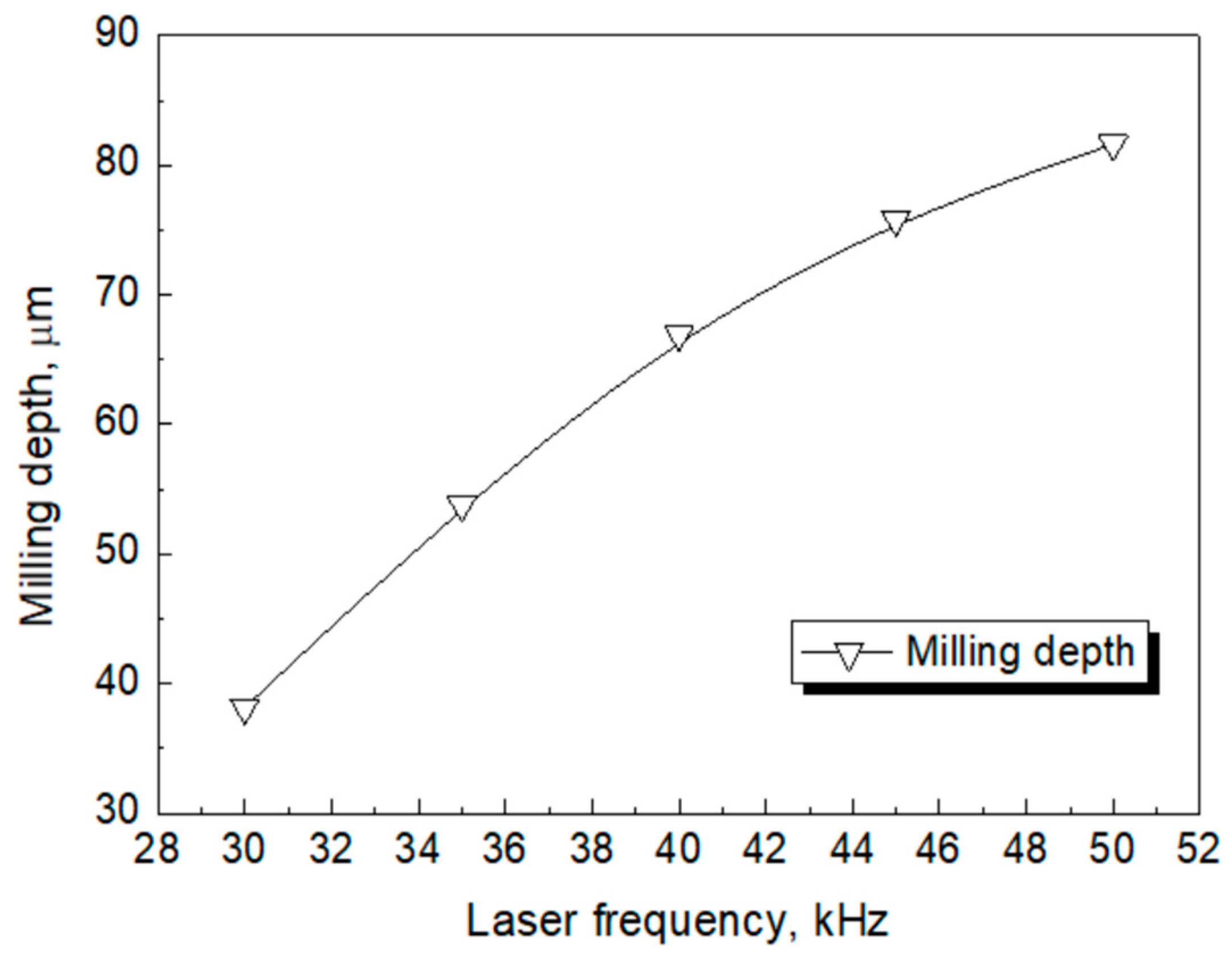
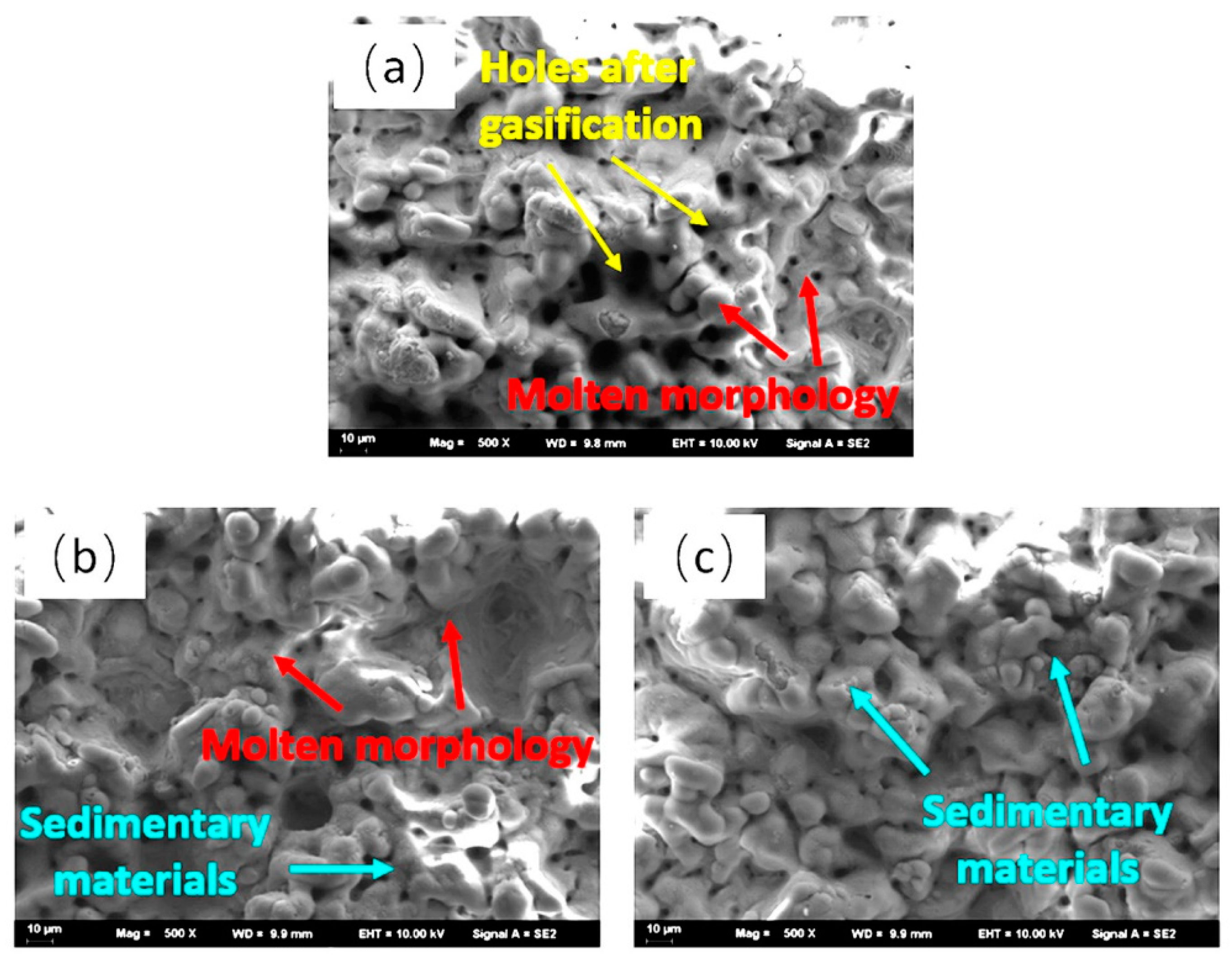
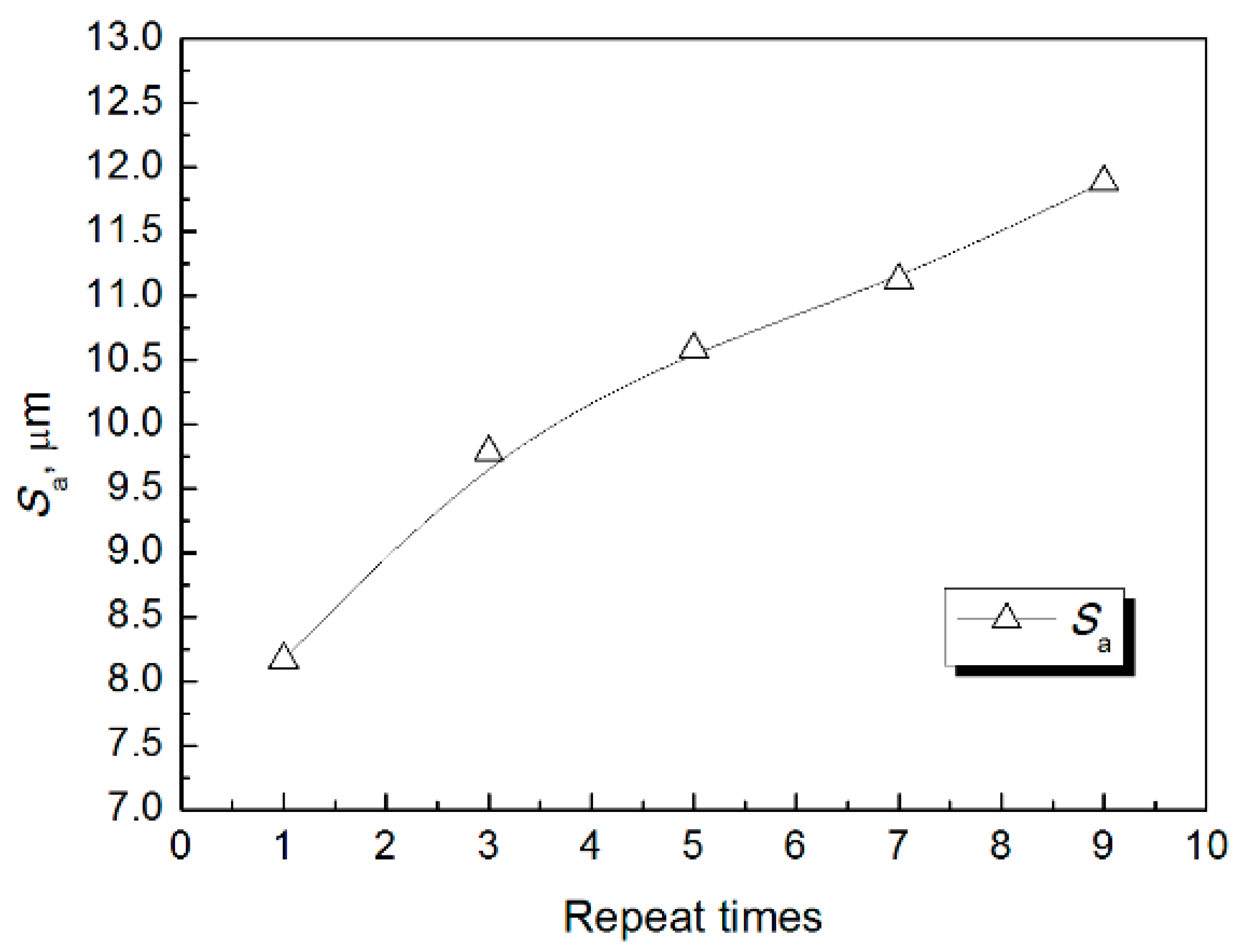
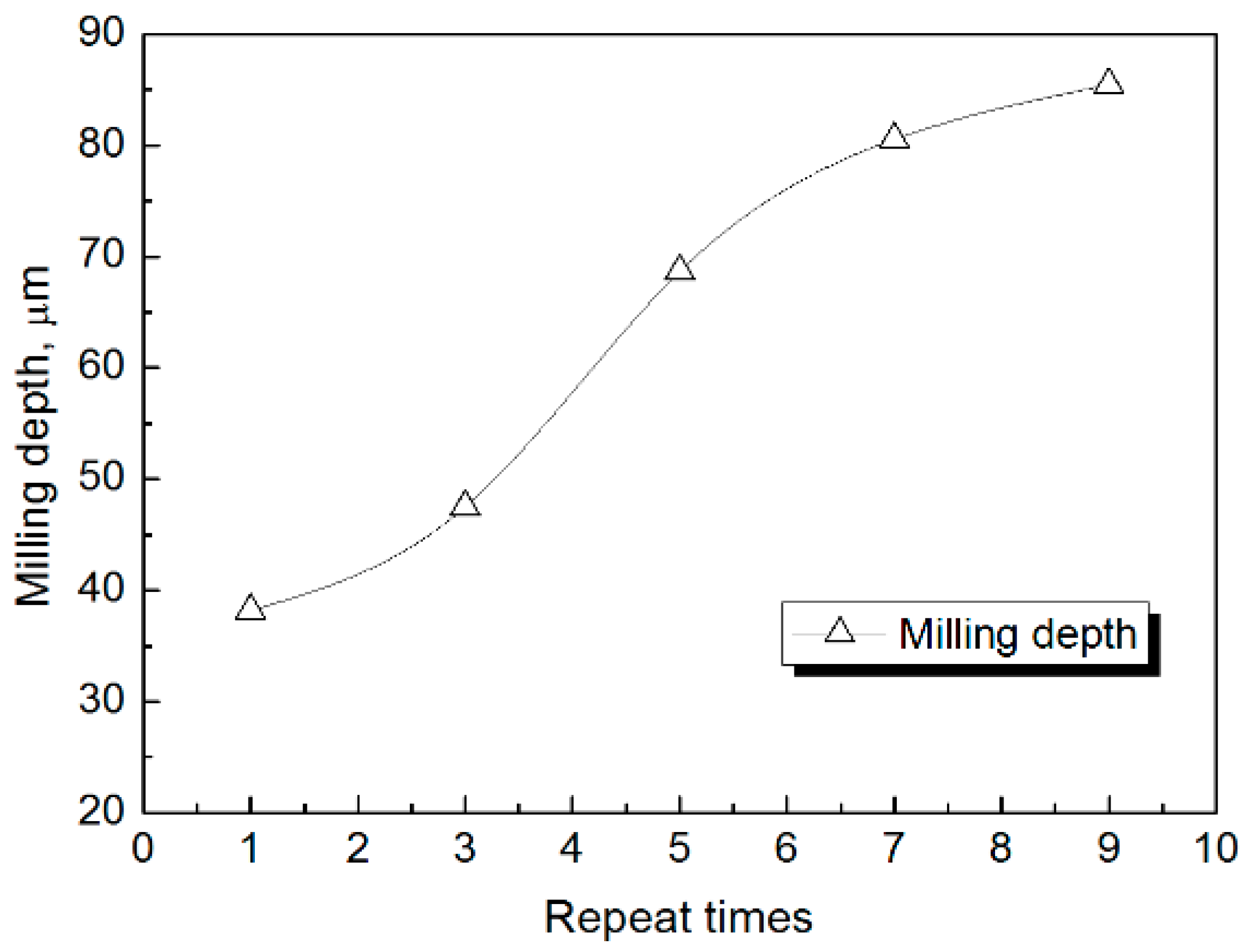

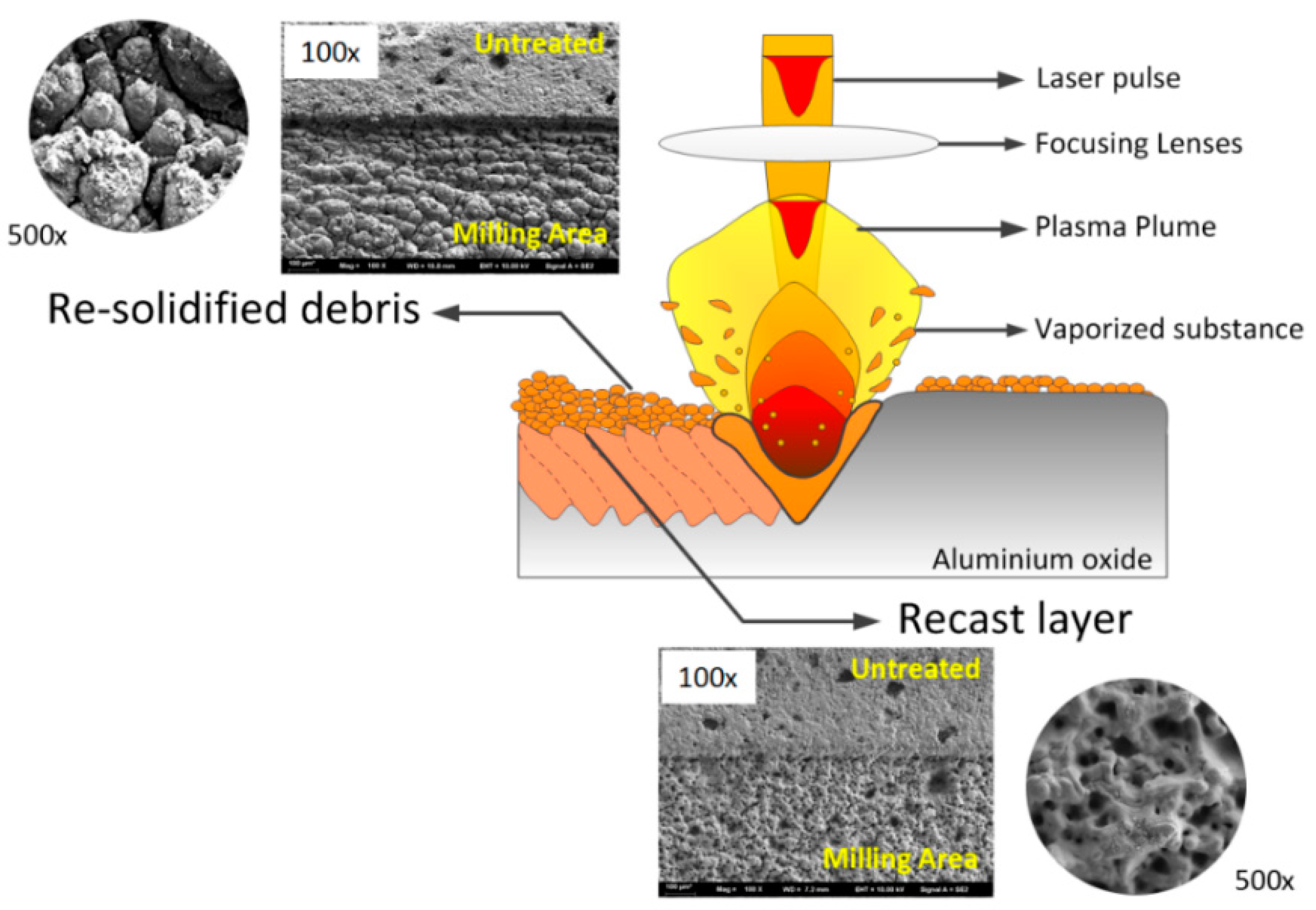
| Density (g/cm3) | Absorption Coefficient | Index of Refraction | Reflectivity | Coefficient of Thermal Expansion (×10−6/K) | Thermal Conductivity (W/m•K) |
|---|---|---|---|---|---|
| 3.5 | 0.85 | 1.3~2.7 | 0.051~0.153 | 7.2 | 24 |
Publisher’s Note: MDPI stays neutral with regard to jurisdictional claims in published maps and institutional affiliations. |
© 2022 by the authors. Licensee MDPI, Basel, Switzerland. This article is an open access article distributed under the terms and conditions of the Creative Commons Attribution (CC BY) license (https://creativecommons.org/licenses/by/4.0/).
Share and Cite
Xu, Z.; Zhang, Z.; Sun, Q.; Xu, J.; Meng, Z.; Liu, Y.; Meng, X. Effects of Nanosecond-Pulsed Laser Milling on the Surface Properties of Al2O3 Ceramics. Coatings 2022, 12, 1687. https://doi.org/10.3390/coatings12111687
Xu Z, Zhang Z, Sun Q, Xu J, Meng Z, Liu Y, Meng X. Effects of Nanosecond-Pulsed Laser Milling on the Surface Properties of Al2O3 Ceramics. Coatings. 2022; 12(11):1687. https://doi.org/10.3390/coatings12111687
Chicago/Turabian StyleXu, Zhaomei, Zhengye Zhang, Qi Sun, Jiale Xu, Zhao Meng, Yizhi Liu, and Xiankai Meng. 2022. "Effects of Nanosecond-Pulsed Laser Milling on the Surface Properties of Al2O3 Ceramics" Coatings 12, no. 11: 1687. https://doi.org/10.3390/coatings12111687
APA StyleXu, Z., Zhang, Z., Sun, Q., Xu, J., Meng, Z., Liu, Y., & Meng, X. (2022). Effects of Nanosecond-Pulsed Laser Milling on the Surface Properties of Al2O3 Ceramics. Coatings, 12(11), 1687. https://doi.org/10.3390/coatings12111687






